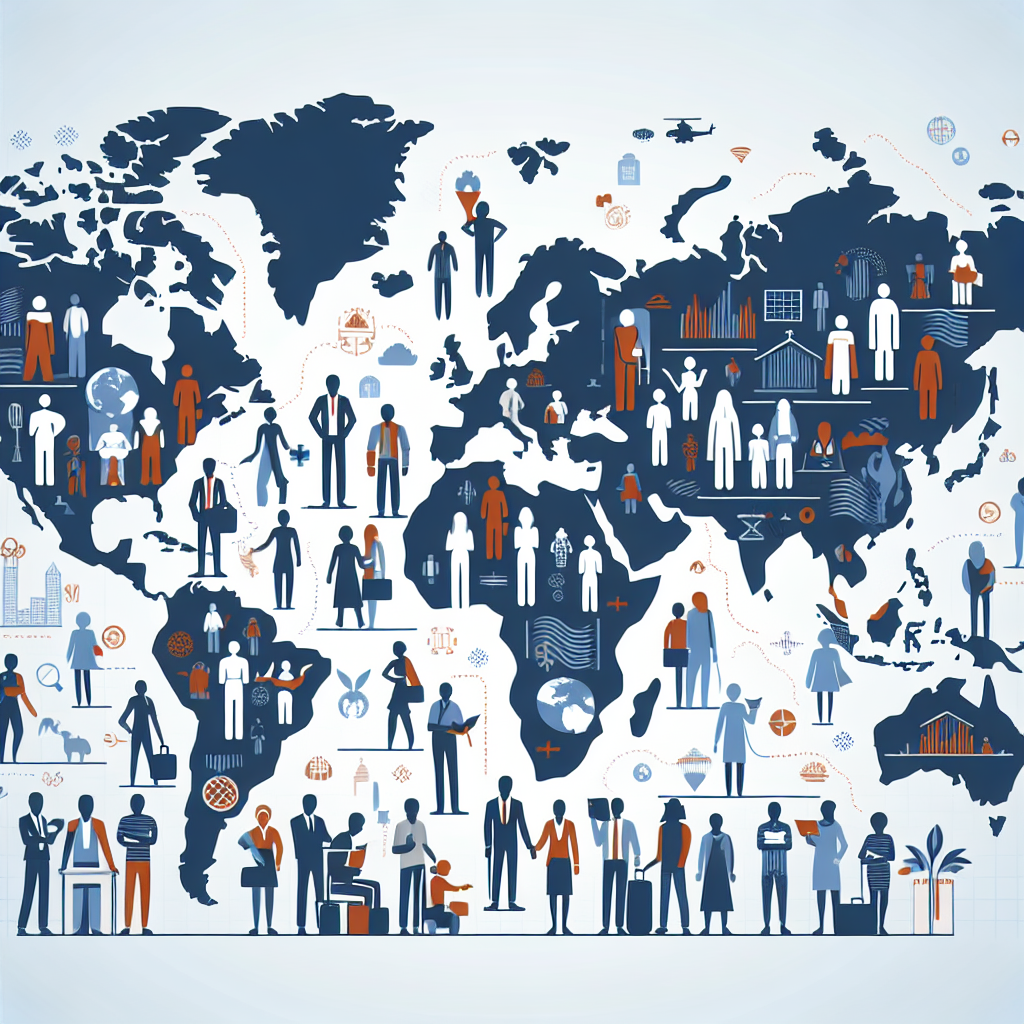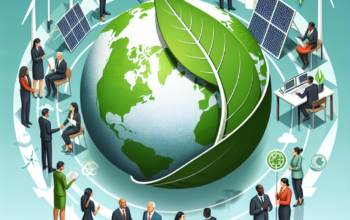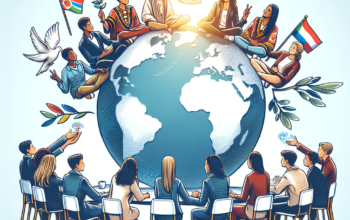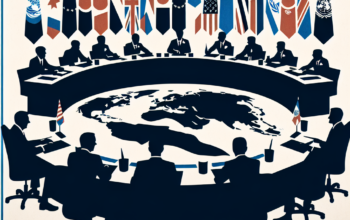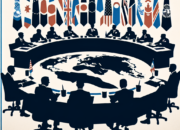Introduction
The intersection of immigration policies and workforce diversity is a pivotal topic in today’s global economy. As countries navigate the complexities of immigration, the laws shaped around this issue significantly affect the demographic composition of the workforce. In 2025, nations such as the United States, Canada, Australia, and many European countries have recognized the imperative of adopting policies that not only welcome immigrants but actively promote diversity within the labor market. These policies are critical in enhancing innovation, driving economic growth, and fostering inclusive working environments, making the examination of how immigration policies shape workforce diversity a high-priority subject.
The Impact of Immigration Policies on Workforce Diversity
Immigration policies play a crucial role in determining the diversity of the workforce in any given country. They are crafted to either encourage or limit the entry of foreign workers, which in turn affects the demographic makeup of the labor market. For instance, more inclusive policies—like those favoring skilled immigration—often result in a higher influx of talent from various countries, cultures, and backgrounds. This influx not only enriches the workplace with diverse perspectives but also fosters a culture of innovation and creativity. Countries that actively promote diversity through immigration policies can leverage the unique skills and experiences of immigrant workers, which are essential for driving economic growth in an increasingly competitive global landscape.
A notable example of this is Canada, which has established a points-based immigration system to attract skilled workers. As of 2025, this approach has demonstrated success in integrating immigrants into the workforce effectively. Consequently, the Canadian labor market has become one of the most diverse in the world. The positive correlation between inclusive immigration policies and workforce diversity prompts further examination of how these laws are structured and the broader implications they have on society as a whole.
The Role of Government Regulations and Policies
Government regulations significantly influence the landscape of workforce diversity through immigration laws and policies. Understanding the nuances of these regulations is essential for grasping how they shape labor markets. In recent years, many governments have recognized the necessity for clear and supportive immigration channels that not only address labor shortages but also embrace multiculturalism. For instance, the European Union has made strides in unifying immigration laws among its member states, resulting in more fluid movement of skilled labor across borders. This has created dynamic working environments enriched by different cultures, enhancing both productivity and creativity within sectors.
In contrast, restrictive immigration policies can hinder the arrival of skilled workers and diminish the potential for workforce diversity. Such policies often lead to labor shortages, affecting sectors that depend heavily on culturally diverse workers, like hospitality, healthcare, and technology. Countries with stringent immigration laws may find themselves at a disadvantage in attracting global talent compared to more open nations. Thus, the balance between regulation and diversity remains delicate—policies must not only ensure national security and economic stability but also cultivate an environment where multiculturalism can thrive and contribute to innovation.
Benefits of a Diverse Workforce Fueled by Immigration
A diverse workforce enriched by immigration brings a myriad of benefits that extend far beyond the workplace. Companies with diverse teams have been proven to be more innovative, as varied perspectives lead to a broader range of ideas and solutions. Furthermore, organizations that prioritize diversity often experience increased employee morale and engagement. In 2025, studies continue to show that companies embracing diversity are more likely to attract and retain top talent, as potential employees now prioritize workplaces that reflect their values and beliefs about inclusivity.
The economic benefits of workforce diversity are also striking. According to a report by McKinsey & Company, businesses with higher diversity levels perform better financially. This correlation is particularly significant in sectors driven by creativity and innovation, such as technology and marketing. Diverse teams improve the decision-making process and enhance organizational resilience by drawing on the unique experiences and insights of various employees. As immigrants often enrich their work environments with their distinct backgrounds, their contributions help companies adapt better to changing markets and consumer demands.
Additionally, a diverse workforce can strengthen company reputation, allowing firms to better serve a multicultural client base. In 2025, as globalization continues to affect business operations, the ability to relate to and understand a diverse customer base becomes increasingly vital. Companies that successfully integrate diversity into their workforce not only improve their market positioning but also contribute to building a more equitable society.
Challenges Faced by Immigrants in the Workforce
Despite the numerous benefits associated with workforce diversity, immigrants often encounter several challenges when integrating into a new labor market. Language barriers, cultural differences, and varying degrees of recognition for foreign qualifications are significant hurdles that can hinder the employment prospects of immigrants. As of 2025, organizations are becoming more aware of the necessity for robust onboarding programs that facilitate the integration of immigrant workers into their teams, addressing these challenges directly. Employers who invest in language training and cultural orientation not only equip immigrant employees for success but also foster a more inclusive workplace culture.
Moreover, societal biases and discrimination can further complicate the inclusion of immigrants in the workforce. Even in countries with inclusive immigration policies, stereotypes, and prejudice can create obstacles for immigrant workers as they attempt to navigate their careers. Companies are increasingly recognizing the importance of diversity training and inclusive hiring practices to mitigate these issues. Initiatives designed to celebrate diversity and promote equity can lead to a more supportive environment, ultimately benefiting both the organization and the immigrant workforce.
Another challenge is the potential for exploitation and unfair labor practices faced by some immigrants, particularly in low-skilled jobs. Policymakers and advocacy groups are calling for stricter enforcement of labor laws to protect immigrant employees from being underpaid or subjected to unsafe working conditions. As countries like the United States and other developed nations continue preparing for workforce evolution, addressing these challenges and ensuring fair treatment for immigrant workers must remain a priority to harness the full potential of workforce diversity.
The Future of Workforce Diversity and Immigration Policies
Looking ahead to the remainder of 2025 and beyond, the future of workforce diversity is inextricably linked to evolving immigration policies. With the increasing recognition of the value that diverse populations bring to the economy, it is likely that countries will continue to make strides toward inclusivity in their immigration practices. As businesses face ongoing challenges related to globalization and talent shortages, many countries are recognizing that a flexible, inclusive immigration framework is critical to attracting the workforce necessary to sustain economic growth.
Innovative technology will also play a pivotal role in shaping the future of workforce diversity. For example, Artificial Intelligence (AI) and machine learning can streamline recruitment processes, helping employers to identify diverse talent while minimizing unconscious biases in hiring. As more companies around the world adopt these technologies, the potential for greater workforce diversity will grow, creating a more level playing field for both domestic and immigrant workers.
International collaboration will become increasingly essential as countries reflect on and learn from each other’s immigration strategies. Multinational agreements focused on workforce mobility could become a future trend, allowing nations to share best practices while fortifying their own immigration systems. As countries recognize the shared benefits of a diverse workforce, a more cooperative approach to immigration policy formation will likely emerge, paving the way for progressive changes that support the integration of immigrants into the labor market.
Conclusion
The relationship between immigration policies and workforce diversity is a critical aspect of today’s global economy. As nations contend with the complexities of immigration, it becomes increasingly clear that inclusive policies serve to enrich the workforce and offer significant economic benefits. While challenges remain for immigrant workers, proactive measures—including robust government regulations and innovative employer practices—can pave the way for a more integrative future. Ultimately, by harnessing the strengths of a diverse labor population and creating a culture of inclusivity, countries worldwide can develop resilient economies equipped for the challenges of tomorrow.
FAQs Section
How do immigration policies affect job availability for immigrants?
Immigration policies directly influence job availability by determining which foreign workers can enter the labor market. Inclusive policies that prioritize skilled workers can open up more job opportunities, while restrictive laws may lead to labor shortages in critical sectors.
What role does cultural diversity play in workplace innovation?
Cultural diversity fosters innovation by bringing together various perspectives, experiences, and ideas. Teams comprised of members from different backgrounds are more likely to generate robust solutions and creative strategies.
How can companies support immigrant employees?
Companies can support immigrant employees by offering language training, mentorship programs, and diversity training. Additionally, establishing strong onboarding practices can help mitigate the challenges faced by immigrants in adapting to new work environments.
What are the long-term economic benefits of a diverse workforce?
Long-term economic benefits of a diverse workforce include improved company performance, increased employee retention, enhanced creativity, and greater adaptability to market changes. Diverse teams contribute to businesses’ ability to serve a multicultural customer base effectively.
How can policymakers promote better immigration practices?
Policymakers can promote better immigration practices by evaluating and reforming existing laws to ensure they are inclusive and supportive. Fostering international collaboration and encouraging private sector engagement can lead to more innovative and effective immigration strategies.
